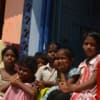Top global health organizations: A primer
Global health is a growing industry, with billions of dollars going toward programs to stop pandemics such as HIV/AIDS. It is therefore no surprise that the sector is home to some of the world’s largest charities and relief organizations.
A medical degree is not always necessary to build a career in global health. Behind front-line operations are a myriad of professionals, from scientists researching cures to administrators managing programs. International assistance of health causes rose from $5.1 billion in 1990 to $21.8 billion in 2007, according to a June 2009 study published in the Lancet medical journal. The report suggests that resources have been moving away from traditional governing institutions toward non-governmental organizations. The percentage flowing through NGOs grew from 13.1 percent in 1990 to 24.9 percent in 2006. Such funding trends could translate into more career opportunities with a diverse array of organizations, tackling a variety of global health challenges from reproductive health to child survival, infectious diseases to HIV/AIDS, and mental health to nutrition, water and sanitation. Here are some of the world’s largest global health organizations: Bill & Melinda Gates Foundation The foundation, run by Microsoft creator Bill Gates and his wife Melinda, focuses on diseases, vaccines, nutrition and other health issues by funding many of the largest and most vital health organizations around the globe. With a focus on innovation and technology, it employs thousands of scientists, technicians, epidemiologists and administrators. To date, the foundation has committed nearly $10 billion in grants to discover scientific breakthroughs, develop affordable vaccines, and deliver solutions to the people who need them most. Care International A leading humanitarian organization, Care places a special focus on working alongside poor women. Health care projects include preventing the spread of HIV, increasing access to clean water and sanitation, and providing emergency relief. In 2008, Care reported that its programs improved the lives of more than 55 million people in 66 countries. Concern Worldwide This Irish agency started over 40 years ago and now operates in more than 30 countries around the globe. With annual health expenditures in excess of $42 million, Concern aims to help reduce mortality rates and support public health programs. In addition, Concern spends more than $8 million per year empowering at-risk individuals to minimize their risk of HIV infection. FHI 360 FHI 360 offers public health-related services such as clinical research, product quality and compliance, consulting and health communication and social marketing services, and training. Its other areas of focus include education, economic development, civil society strengthening and the environment. FHI 360 has 60 offices and 4,400 employees worldwide. Global Alliance for Improved Nutrition A former United Nations branch with headquarters in Geneva, GAIN currently employs people of more than 25 nationalities. The organization is mainly focused on sub-Saharan Africa and southern Asia, where it works to reduce malnutrition through food fortification and other strategies that aim to improve the health and nutrition of populations at risk. With a budget of $37 million, GAIN has reported improving the lives of nearly 200 million people. Global Alliance for Vaccines and Immunization GAVI is a global partnership representing stakeholders in immunization from both private and public sectors in the developing world and donor countries. Members include the Gates Foundation, the financial community, and the World Bank. Working together, alliance members aim to achieve the Millennium Development Goal for child health: to reduce the mortality rate of children under 5 by two-thirds come 2015. GAVI has committed to provide $3.7 billion for health initiatives in 75 developing countries between 2000 and 2015. Currently, 67 developing countries are receiving GAVI funds to immunize children against hepatitis B. Global Fund to Fight AIDS, Tuberculosis and Malaria This Geneva-based financing institution collaborates with other international organizations to supplement efforts dealing with the three diseases. To date, it has committed $15.6 billion in 140 countries to support large-scale prevention, treatment and care programs. According to the group’s Web site, the Global Fund has reached more than 2.3 million HIV/AIDS patients, treated 5.4 million for TB, and distributed 88 million bed nets. Médecins Sans Frontières Operating in 60 countries around the globe, Doctors Without Borders provides emergency medical care to millions suffering from natural and man-made disasters. Every day, close to 27,000 doctors, nurses, logisticians, administrators, and experts on water, sanitation and other issues help to provide medical care as part of MSF’s international teams. In 2006, the aid agency provided more than 9 million outpatient consultations, treated 1.8 million people for malaria, attended to 150,000 malnourished children and vaccinated 1.8 million people against meningitis. Partners in Health Founded by development icon Paul Farmer, Partners in Health is renowned for pioneering a holistic community-based approach to health care while bringing services to some of our planet’s poorest regions. The organization operates in Haiti, Lesotho, Malawi, Peru, Russia, Rwanda and the United States, as well as Mexico and Guatemala. Its 2005 budget exceeded $36 million. Partners in Health employs more than 4,000 people worldwide, over 98 percent of whom are members of local communities. Its inclusive staff comprises health care personnel, accountants, cooks, laboratory technicians, drivers, computer programmers, engineers, administrators, researchers, medical equipment specialists, teachers, and agronomists. U.S. President’s Emergency Plan for AIDS Relief The U.S. State Department oversees PEPFAR, an ambitious effort to prevent 12 million new infections and care for 12 million people by 2013. To meet these goals and build local capacity, PEPFAR will help train at least 140,000 new health care workers, in addition to 3.7 million health workers that have already received support. In 2008, PEPFAR partnered with 2,667 organizations, 86 percent of which were based in the field. Program for Appropriate Technology in Health PATH is one of the world’s largest international nonprofit health organizations, with operations spanning 70 countries and annual revenues exceeding $187 million. To achieve its mission of breaking long-standing cycles of poor health, PATH focuses on developing solutions for emerging and epidemic diseases, designing health technologies for low-resource settings, rendering safer childbirth, promoting health equity for women, and providing vaccines for women and children. Red Cross In its 146-year history, the International Committee of the Red Cross has become ubiquitous with crisis relief. The Geneva-headquartered organization operates in 80 countries and has a total of more than 12,000 staff, including more than 1,400 specialists currently on field missions across the globe. Job candidates must be prepared to accept unaccompanied postings abroad during the first 24 months of employment. Assignments are often located in conflict areas where ICRC sustains its largest operations, including Sudan, Afghanistan, Israel, the Palestinian Territories, and the Democratic Republic of Congo. Save the Children Save the Children supports health programs in nearly 40 countries around the world. Priority program areas include child survival; reproductive health, including family planning, safe motherhood and adolescent health; HIV/AIDS; and school health and nutrition. Save the Children has reported reaching more than 20 million mothers and children with basic health services and education about proper infant care. William J. Clinton Foundation Founded by former U.S. President Bill Clinton, this NGO currently operates in 40 countries, with a staff exceeding 1,100. Much of the group’s health care work focuses on HIV/AIDS. According to the foundation, nearly half of all people living with HIV and on treatment in developing countries are benefiting from medicines purchased under its negotiated agreements. According to the foundation, 70 countries have access to the foundation’s negotiated prices for antiretroviral drugs and diagnostics, representing more than 92 percent of people living with HIV globally. World Health Organization WHO is the leading authority for health within the U.N. system. More than 8,000 public health experts - including doctors, epidemiologists, scientists, managers, administrators and other professionals from all over the world - work for WHO in 147 country offices, six regional offices, and at its headquarters in Geneva. WHO also has HIV/AIDS staff working in more than 85 countries worldwide. The total WHO budget for 2006-2007 was roughly $3.3 billion. World Vision World Vision remains one of the largest faith-based aid organizations. Its worldwide staff of 40,000 assist a reported 100 million people annually in nearly 100 countries. Much of its work centers on emergency relief and humanitarian crises, including operations in Darfur, Somalia, Sri Lanka and the Democratic Republic of Congo. World Vision is also the largest aid distributor for the World Food Program, and works to expand clean water projects in West Africa. Additionally, the organization has operated HIV/AIDS prevention projects in 60 countries. More than 95 percent of World Vision’s staff members are nationals of the countries in which the group serves.
A medical degree is not always necessary to build a career in global health. Behind front-line operations are a myriad of professionals, from scientists researching cures to administrators managing programs.
International assistance of health causes rose from $5.1 billion in 1990 to $21.8 billion in 2007, according to a June 2009 study published in the Lancet medical journal. The report suggests that resources have been moving away from traditional governing institutions toward non-governmental organizations. The percentage flowing through NGOs grew from 13.1 percent in 1990 to 24.9 percent in 2006.
Such funding trends could translate into more career opportunities with a diverse array of organizations, tackling a variety of global health challenges from reproductive health to child survival, infectious diseases to HIV/AIDS, and mental health to nutrition, water and sanitation.
This article is exclusively for Career Account members.
Unlock this article now with a 15-day free trial of a Devex Career Account. With a Career Account subscription you will get:
- Full access to our jobs board, including over 1,000 exclusive jobs
- Your Devex profile highlighted in recruiter search results
- Connections to recruiters and industry experts through online and live Devex events
Start my 15-day free trialAlready a user?
Printing articles to share with others is a breach of our terms and conditions and copyright policy. Please use the sharing options on the left side of the article. Devex Pro members may share up to 10 articles per month using the Pro share tool ( ).
Jody is a Devex international correspondent in Washington, D.C. Previously, he worked as a monitor in South Africa's provincial parliament, as well as a researcher for the Center for Economic and Policy Research and for Glass Lewis & Co. He has studied at Rutgers University, the University of Natal and the University of the West Indies, earning a bachelor's in political science and a master's in international relations.








